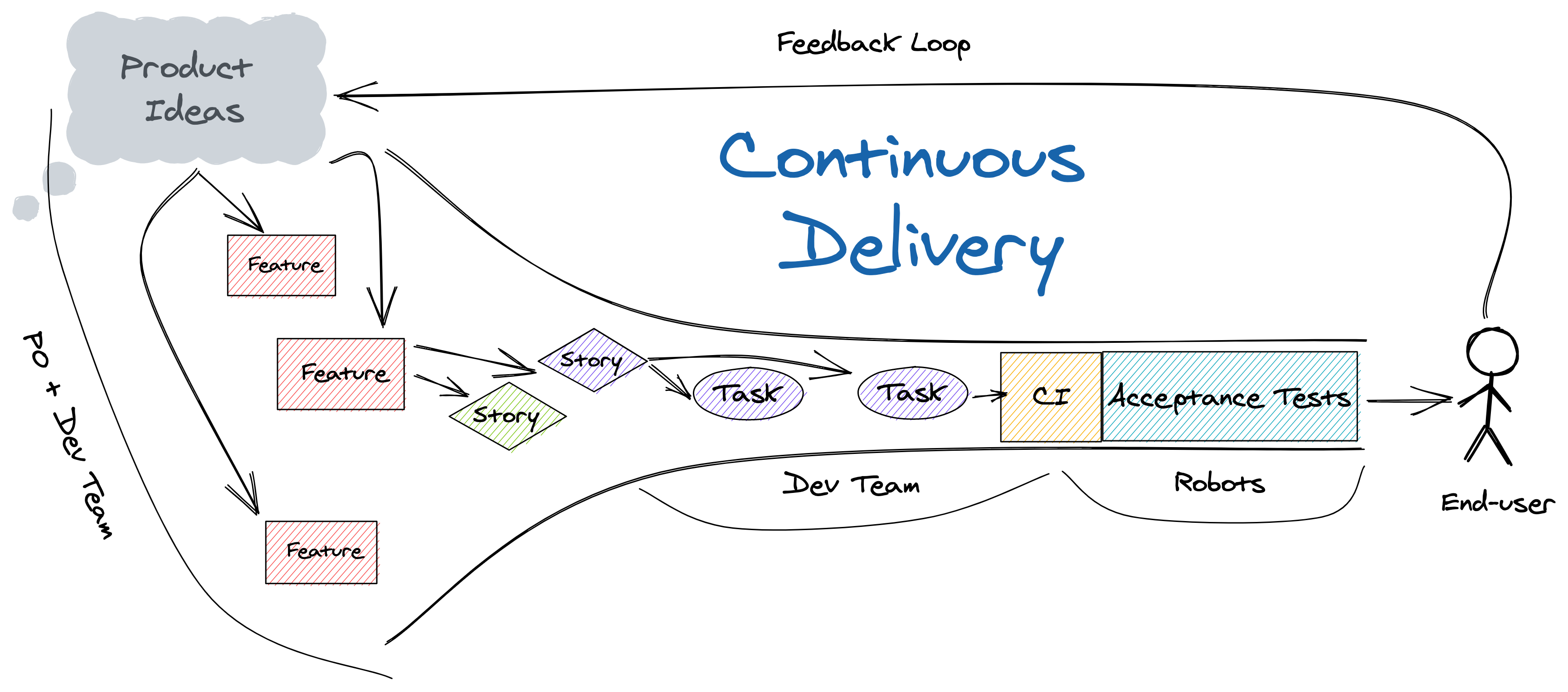Starting CD
Migrating your system to Continuous Delivery
2 minute read
Continuous Delivery (CD) is the ability to deliver the latest changes on-demand, with no human touchpoints between code integration and production delivery.
Overview

CD Pipeline
Continuous Delivery extends beyond automation. It encompasses the entire cycle of identifying value, delivering it, and verifying with the end-user that the expected value was delivered.
Goals
CD aims to:
- Uncover external dependencies and organizational process issues
- Reduce overhead
- Improve quality feedback
- Enhance end-user outcomes and team work/life balance
CD Maturity
While avoiding rigid “maturity models,” we can outline competency levels:
Minimums
- Daily integration of tested changes to the trunk
- Consistent delivery process for all changes
- No manual quality gates
- Same artifact used in all environments
Good
- New work delivered in less than 2 days
- All changes delivered from the trunk
- Commit-to-production time under 60 minutes
- Less than 5% of changes require remediation
- Service restoration time under 60 minutes
Continuous Integration (CI)
CI Working Agreement
- Branches originate from and are deleted within 24 hours
- Changes must pass existing tests before merging
- Team prioritizes completing work in progress over starting new work
- Fixing a broken build is the highest priority
Desired Outcomes
- More frequent integration of smaller, higher quality changes
- Efficient test architecture
- Lean code review process
- Reduced Work In Progress (WIP)
Continuous Delivery/Deploy
Aims to achieve:
- Increased delivery frequency and stability
- Improved deploy success and time to restore service
- Reduced development cycle time and process waste
- Smaller, less risky production releases
- High-performing product teams with domain expertise
Recommended Practices
- Conduct a Value Stream Map
- Build a roadmap to remove constraints
- Align with the CI working agreement
- Implement a single CD automated pipeline per repository
Note
A valid CD process has only one method to build and deploy any change. Deviations indicate an incomplete process that puts the team and business at risk.Pipeline Best Practices
- Focus on hardening the pipeline to block bad changes
- Integrate outside the pipeline, virtualize inside
- Limit stage gates (ideally one or fewer)
- Developers own the full pipeline
Key Metrics
- CI cycle time: < 10 minutes from commit to artifact creation
- CD cycle time: < 60 minutes from commit to Production
Tips
- Use trunk merge frequency, development cycle time, and delivery frequency to uncover pain points
- Keep all metrics visible and refer to them often
- See CD best practices and CD Roadblocks for more tips
Further Reading
- Continuous Delivery
- Jez Humble: Continuous Delivery sounds great, but it won’t work here @ DevOn Summit 2017
Pipeline & Application Architecture
A guide to improving your delivery pipeline and application architecture for Continuous Delivery